 |
 |
11.30.25

LeadershipNow 140: November 2025 Compilation
See more on
Posted by Michael McKinney at 02:01 PM
11.27.25

Leading Thoughts for November 27, 2025
IDEAS shared have the power to expand perspectives, change thinking, and move lives. Here are two ideas for the curious mind to engage with: Adam Galinsky on sharing praise: “When we are in a position of leadership, all our words and expressions—positive and negative—get amplified. Amplify your inspiring amplifications. How? By sharing your praise of others with their leaders. When you work with someone who really excelled at a task, you can let their boss know how much you appreciated their efforts. Taking the time to write a note of praise or gratitude to one’s supervisor further amplifies the value of their contributions.” Source: Inspire: The Universal Path for Leading Yourself and Others Erwin McManus on gratitude: “When you’re ungrateful, you’re actually postured toward the world as, the world owes me something. When you’re grateful, you’re actually postured as, I owe the world something. And so it’s really just a differential between being a taker and being a giver. Gratitude is the only internal ingredient that makes you whole. No matter how much help you get, no matter how much of the Bible you read, no matter how much church you go to, or synagogue, or whatever it may be, you will never be whole if you’re ungrateful.” Source: The Arena Look for these ideas every Thursday on the Leading Blog. Find more ideas on the LeadingThoughts index.
Posted by Michael McKinney at 08:14 AM
11.20.25

Leading Thoughts for November 20, 2025
IDEAS shared have the power to expand perspectives, change thinking, and move lives. Here are two ideas for the curious mind to engage with: Nick Bare on the value of running: “So, why run? It is versus you. You keep driving through the little pieces of pain that you’re experiencing in your legs. Those pieces go a long way to developing something inside of you. Your lungs burn when you first get started and you begin gasping for air as you attempt to move your legs faster than they can sustain. Running is humbling. Running teaches us discipline, focus, and the power of consistent action. Running builds confidence. And running creates opportunities for mental clarity that I haven’t been able to unlock anywhere in my entire life. It is so much more than just “running.” Source: Go One More: Find the Clarity to Make Intentional, Life-Changing Choices Entrepreneur Anthony Pompliano on surrounding yourself with compounders: “Surround yourself with compounders. Compounders are people who focus on compounding knowledge, health, wealth, and deep relationships over decades. These friends are hard to find, but invaluable when you do. They will force you to level up your game, Conversations with these individuals are higher quality. Their success will inspire you to accomplish more. And you will get the added benefit of learning from your successful friends’ wins and losses along the way.” Source: How To Live An Extraordinary Life Look for these ideas every Thursday on the Leading Blog. Find more ideas on the LeadingThoughts index.
Posted by Michael McKinney at 12:30 PM
11.17.25

The Participation Revolution: Turning Customers into Co-Creators and Co-Producers
THE new hyper-digital age will see a significant shift towards participation branding in what some regard as the Participation Age. As consumers increasingly rely on one another for feedback and input on what and where to buy products and services, the best brands invite consumers to participate in brand-building. This participation could involve a range of actions, from co-creation of product design to customer-led innovation efforts, user-generated ads and promotions, and people-powered influencer marketing programs. Notably, each of these actions has the potential to positively influence customer engagement. The participation branding approach co-creates value with customers to effectively deliver greater value.
The Lego Legacy Participation branding can serve as a vehicle for researching customers’ needs and requirements. It enhances customers’ identification with the brand, as user-designed products provide a sense of empowerment for those involved in the co-creation process.. Participation branding can enhance consumers’ willingness to pay by evoking feelings of accomplishment and a sense of contribution to the production process. One example of a brand that effectively practices participation branding is Lego. The Lego Group works to enliven children’s creativity through play and learning. Their mission is to inspire and develop the builders of tomorrow. The brand’s plastic construction bricks are among the world’s most iconic playthings. Today, Lego provides toys, experiences, and teaching materials for children in more than 140 countries. The brand is now more than just a toy manufacturer; it has been widely recognized as a cultural phenomenon, evidenced by its toys’ broad representation in publications, television, and film, along with artistic and cultural works. Interestingly, Lego is continually seeking ideas for TV shows, digital videos, and toy sets—all essential for helping the company introduce new products and, consequently, enhance its revenues. For instance, Lego enables people to share their imaginings on a new platform called the ‘Lego World Builder.’ It allows users to propose story worlds, characters, and other ideas by uploading concept art, videos, and descriptions. The Lego Group receives thousands of creative individuals with original ideas for new content and stories each year. Lego World Builder has enabled the company to accelerate the sourcing and development of entire franchises instead of just individual toy sets. AI and Participation Branding Participation branding can progress from lower levels of getting customer input, to fostering deeper customer engagement, to co-creation of content and products, to a final stage where the customer becomes fully integrated into the production of all aspects of a brand. AI can enable various tasks involved in participation branding. It can facilitate this process in specific ways as customers engage in co-creating advertising or product development with a brand. A key factor in selecting customer participation activities is testing new product and campaign ideas that arise from customer input and co-creation opportunities. To achieve this, AI can help generate synthetic personas and A/B testing simulations based on customer input and feedback. Marketers could leverage AI-assisted product co-creation to develop new products or campaigns (e.g., Lego Ideas meets ChatGPT). Current AI tools such as Perplexity AI, Notion AI, ChatGPT for idea generation, Loop11, and Maze (UX testing) can help implement these ideas. In conclusion, participation branding is a crucial pillar of success in the hyper-digital age. It offers significant promise for brands seeking to strengthen their engagement with customers. Vanitha Swaminathan is the Thomas Marshall Professor of Marketing and Director, Center for Branding at the University of Pittsburgh School of Business. Her research focuses on branding strategy and the conditions that foster consumer-brand relationships, as well as how firms can successfully design brand strategies—such as co-branding, brand extensions, brand acquisitions, marketing alliances— to strengthen customer loyalty and firm up stock market performance. Currently, her attention is on understanding how brand managers can leverage the power of technologies such as Augmented and Virtual Reality and Ai to deliver better brand experiences. She also examines how content creators and influencers can help strengthen consumer-brand relationships. She has worked on marketing and branding consulting projects with such companies as The Hershey Company, Kraft Heinz, StarKist, AC Nielsen, GlaxoSmithKline, and Procter & Gamble, and has advised small businesses regarding their digital marketing efforts. In light of her many scholarly and service contributions, the American Marketing Association named her an AMA Fellow in 2024. In 2025, she won the University-wide award for Excellence in Doctoral Mentoring at the University of Pittsburgh. Her recent book is Hyper-Digital Marketing: Six Pillars of Strategic Brand Marketing in an AI-Powered World (Palgrave-Macmillan). Learn more at profvanitha.com 
Posted by Michael McKinney at 01:01 PM
11.14.25

Be a Specialist, Not a Generalist: Why Your Brand Depends on Focus
In a market where clients are under pressure to do more with less, they won’t gamble on generalists. The firms and advisors who thrive are those who carve out a niche and lead it.HEADLINES expressing how AI is reshaping knowledge work are everywhere. From legal research to tax prep, technology is automating the rote tasks that used to justify armies of junior staff. Clients are noticing. A 2025 Bloomberg survey of corporate general councils found that 61 percent expect to experiment with AI-powered tools this year, and more than half say they’re scrutinizing external providers to ensure “specialized value” that machines can’t replace. This is the crux for professional experts. Delivering the work is no longer enough. To grow, you must also sell — and in a climate where clients are questioning every hour billed, they gravitate to advisors they trust with proven authority in a narrow domain. Generalists, by contrast, are interchangeable. And in the emerging era of AI, they’re not only interchangeable with each other — they’re the first targets for agentic AI. If your value is defined by routine analysis, drafting, or process execution, you are competing with tools that promise to do the same work faster and cheaper. Specialists, on the other hand, offer judgment, nuance, and pattern recognition that machines can’t as easily replicate. Why Clients Bet on Specialists When the stakes are high, buyers want the safest option. That means they look for specialists who solve complex, high-value problems every day. An Am Law 200 firm recently noted that its food and beverage practice doubled in five years because clients trusted the lawyers’ niche expertise in regulatory matters. Similar stories play out in consulting, accounting, and litigation support: specialists are sought after, while generalists are easy to swap out. Specialization sends a signal. It tells clients you have depth in their world, you have a nuanced understanding of their challenges, and your unique experience allows you to anticipate what’s coming next. That reduces their risk — and increases your value. How to Carve Out a Niche Not sure where to start? Here are three proven steps to build specialist positioning: 1. Audit your past successes. Look at your client list and identify patterns. Which industries, company sizes, or problem types have you consistently excelled in? Your track record reveals where your authority is already strongest and where you have the most credibility. 2. Align with market demand. Specialization works best when it intersects with growth sectors or pressing client needs. For example, firms serving healthcare are seeing a surge in demand as regulations tighten and mergers and acquisitions activity accelerates. If you can navigate that complexity, you’ll not just win work, you’ll become indispensable. 3. Test and refine your message. Start small — publish an insight, lead a roundtable, or host a webinar targeted to your chosen niche. Notice the response. If prospects lean in and connectors echo your positioning, you’re on the right path. You Can’t Boil the Ocean Here’s the truth: a generalist must cast a wider net, chasing volume to find opportunity. A specialist has a far better chance of cornering a market. By narrowing the scope of your outreach, you increase your odds of dominating a space rather than being an interchangeable player in a crowded one. For doer sellers, this matters. With billable hour demands and client work taking priority, you can’t afford random acts of networking. You only have the capacity to maintain a “short list” of 9 to 35 relationships (based on analysis of professional services CRM user data). If your positioning is too broad, you’ll waste those limited slots on relationships that never compound. The Branding Payoff Becoming a specialist isn’t just about internal clarity. It’s about external differentiation. The professionals who lead with niche authority are invited to speak at industry events, quoted in trade press, and referred more often. They become the go-to experts in their lane. Contrast that with the generalist brand: difficult to market, hard to defend, and easy for buyers to replace. If your website or LinkedIn profile lists 12 practice areas or industries served, you’re not signaling focus. You’re signaling “jack of all trades, master of none.” Practical Moves to Specialize Here are a few tactical steps to reinforce your specialist brand:
In today’s professional services marketplace, being broad isn’t safe — it’s risky. Focus doesn’t limit you. It frees you. By claiming a niche, you differentiate your brand, elevate your value, and make every minute of business development count. 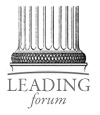 
Posted by Michael McKinney at 10:49 AM
11.13.25

Leading Thoughts for November 13, 2025
IDEAS shared have the power to expand perspectives, change thinking, and move lives. Here are two ideas for the curious mind to engage with: Anne-Laura Le Cunff on life as an experiment: “No matter how good your tool or deliberative your thought process, one thing never changes: There is no right choice. If you’re used to zero-sum thinking, that point of view may frustrate you. But it’s almost impossible to fail when you see everything as an experiment. In a life of experimentation, there is no wrong choice, either. A pact isn’t a destination. It’s a path you want to discover more about yourself and the world. Success and failure are fluid constructs, not fixed labels. If you simply keep going as is, it means you found an ideal groove—amazing! If you decide to stop, it means this direction didn’t feel good—now you know! Source: Tiny Experiments: How to Live Freely in a Goal-Obsessed World Nick Bare on consistency: “Showing up and being consistently good creates results. Source: Go One More: Find the Clarity to Make Intentional, Life-Changing Choices Look for these ideas every Thursday on the Leading Blog. Find more ideas on the LeadingThoughts index.
Posted by Michael McKinney at 01:17 PM
11.12.25

The Power of Edges: Why the Overlap Between Teams and Disciplines Drives Innovation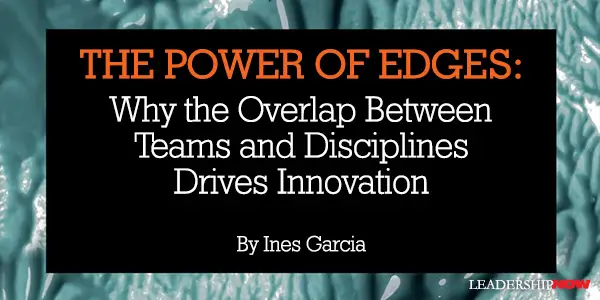
THE most biodiverse place on Earth isn’t found deep in the Amazon rainforest or in the heart of the ocean. It’s at the edges–where forest meets water, where mountain slopes transition to valley floors, where different ecosystems intersect and create something neither could achieve alone. These “edge effects” generate extraordinary abundance through the dynamic interaction of different systems. The same principle applies to our organizations, yet most businesses are designed to minimize exactly these kinds of productive intersections. We organize into departments, create clear reporting lines, and establish distinct territories of responsibility. While this structure provides clarity, it also eliminates the spaces where innovation most naturally occurs. Picture your organization’s structure as a diagram. It likely shows neat boxes connected by clean lines: marketing here, engineering there, sales over here. These artificial boundaries create “innovation dead zones” where potentially transformative interactions simply never happen. When teams operate exclusively within their designated boxes, customer problems get bounced between departments, resources get duplicated, and breakthrough solutions remain undiscovered. The cumulative effect drains organizational energy. Instead of generating value, rigid boundaries create tension points where good work goes to die. Three Strategies to Harness Your Organization’s Edge Effects
Companies that master edge effects consistently outperform their competitors. 3 M’s innovation pipeline thrived because they’ve institutionalized cross-pollination; their famous Post-it Notes emerged from the intersection of adhesive technology and office products. Commonly referred Toyota, they achieved higher quality and faster improvement cycles than competitors because they’ve eliminated rigid departmental separations in favor of integrated problem-solving. These organizations recognize that their greatest untapped resource isn’t hidden within existing departments—it’s waiting to emerge in the spaces between them. Inspect & Adapt It’s worth mentioning that common metrics often miss the value created at organizational edges because they’re designed to measure individual departmental performance. Organizations serious about edge effects need new approaches: track communication patterns across boundaries, identify which breakthrough ideas emerged from cross-functional collaboration, measure customer experience across entire journeys rather than individual touchpoints, and survey how energized employees feel when working on cross-functional versus departmental projects. “The future is not to be predicted nor forecasted but firstly imagined so that it can be created.” As customer expectations span multiple disciplines, as technology blurs industry boundaries, and as global challenges require integrated solutions, organizational edges become competitive advantages. The companies that will thrive in an increasingly complex world won’t be those with the most efficient departments; they’ll be those with the most productive intersections. REvolution The evolution begins with recognizing that the spaces in between on your organizational chart items aren’t empty space to be ignored–it’s innovation space to be cultivated. Nature has spent billions of years demonstrating that abundance flourishes at edges. Organizations ready to learn from this fine-tuned R&D will discover their greatest opportunities in the spaces we have been overlooking all along.  
Posted by Michael McKinney at 08:17 AM
11.07.25

Don’t Be Yourself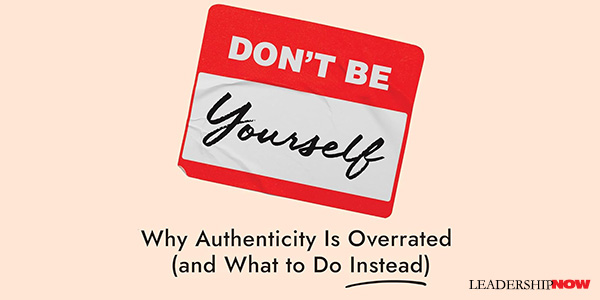
THE groundwork for the modern cult of authenticity was laid in our era by philosophers like Rousseau and others of his mindset who followed him. Their idea that any constraints laid on us or attempts to conform us by society make us inauthentic. But the fact is, we find out who we are in relation to other people and the communities in which we interact. Our uninhibited self is rarely our best self. In Don’t Be Yourself: Why Authenticity Is Overrated (and What to Do Instead) published by Harvard Business Review Press, author Tomas Chamorro-Premuzic asks, “What if chasing authenticity was an actual trap—one that oversimplifies human complexity, disregards the necessity of compromise, and leaves us ill-equipped to navigate the nuanced realities of modern life, which include focusing not just on ourselves and how we feel, but also on others?”` Our uninhibited, authentic self can hold us back from the potential we have. Contrary to what the authenticity cult predicates, success is rarely attained through radical honesty or by always showing every single side of ourselves. Instead, it’s a function of carefully managing your self-presentation—adapting to situations and showcasing the qualities that are best appreciated by others—while making an effort to conceal negative, undesirable, and irrelevant aspects of your personality. Chamorro-Premuzic presents us with four authenticity traps that encourage us to be our unfiltered selves regardless of the situation and refuse to compromise. The Four Authenticity Traps
Instead… You will be more successful if you keep these thoughts in mind:
The common thread here is humility and an other-focus. As leaders, the more you focus on yourself, the less you will care about the needs of those you lead. Your leadership becomes narcissistic. Focusing on being nice, ethical, and competent, and being perceived as trustworthy by others, especially followers, leaders often view authenticity as an end goal, as if it was a critical enabler of their success. However, focusing too much on authenticity—in this case, adhering too closely to the “just be yourself” mantra—will foster a narcissistic mindset that is not conducive to leadership effectiveness. Instead, leaders would be better off if they focused on being other-oriented, so as to understand how other people think and feel in order to enable them to work together. The question is, how can we best display our character and humanity in a way that is most beneficial to our goals and objectives? By shifting our perspective, beyond the assumption that others value our unfiltered or genuine self per se, we can unlock more effective strategies for navigating the complexities and cultural nuances of work and life. This approach, while less self-serving, comforting, or self-obsessed, empowers us to be more intentional about how we present ourselves, communicate, and connect with others. It allows us to balance sincerity with adaptability, personal values with professional demands, and emotional truth with strategic thinking. In doing so, we can become more effective, better performers who rise to challenges with an awareness of our limitations, better leaders who inspire trust and collaboration, and better coworkers who contribute meaningfully to shared goals. 
Posted by Michael McKinney at 08:22 AM
|
BUILD YOUR KNOWLEDGE
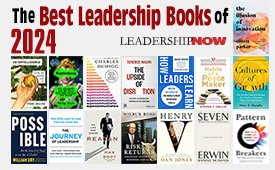 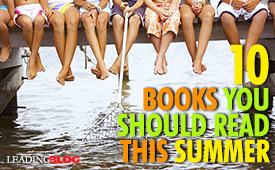

How to Do Your Start-Up Right STRAIGHT TALK FOR START-UPS 
Grow Your Leadership Skills NEW AND UPCOMING LEADERSHIP BOOKS 
Leadership Minute BITE-SIZE CONCEPTS YOU CAN CHEW ON 
Classic Leadership Books BOOKS TO READ BEFORE YOU LEAD |